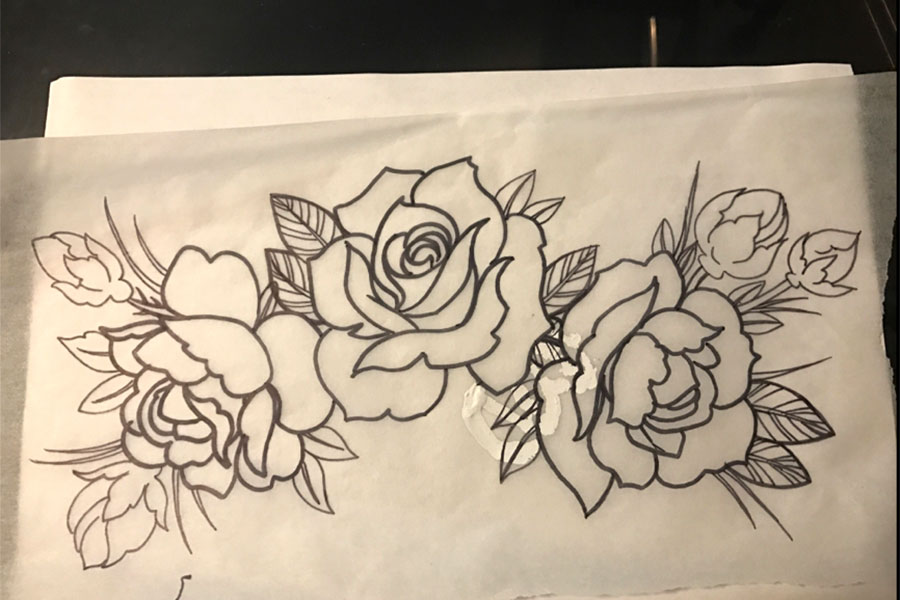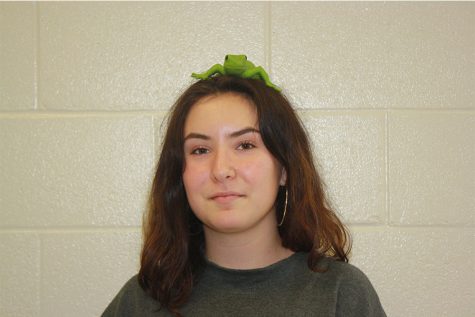Tattoo culture thrives as South students carefully design art for their bodies
Above is a sketch of senior Jane Oas’ tattoo. Oas has loved the idea of having art on her body for a long time and as an 18 year old, she took the plunge.
May 10, 2017
The word tattoo comes from the Tahitian word “tatu” which means “to mark something”. It’s not uncommon for South High students to get tattoos right after their 18th birthday. Most students would be able to name at least one peer with a tattoo. Of course the tradition and popularity of tattooing didn’t start at South, according to powerverbs.com tattooing has arguably existed since 12,000 years B.C.E. We can’t pinpoint exactly when tattooing started because it can be traced back in many different cultures all over the world.
In recorded history, the earliest tattoos came from Egypt during the construction of the pyramids, although it undoubtedly started much earlier, and when Egypt expanded their empire, tattooing spread as well.
Some of the other cultures where ancient tattoos can be found are Greek, ancient Celtic people, the Ainu people of western Asia, Japanese, Mayan, Inca and the native people of New Zealand. Greeks used tattooing for communication among spies, markings identified spies and showed their rank. The Celtic people of ancient Britain used tattoos in ceremonies. The Ainu people used it to show social rank, and in Japan tattooing was a religious or ceremonial right. In New Zealand they have a facial style of tattoo called “Moko.” Many of these tattooing traditions and customs are still practiced today.
Jane Oas is a senior here at South with three tattoos. Oas got her most recent one a week ago, “I got it on my stomach and I got it because I turned 18 in December but I made my appointment in October, and then April was the soonest I could get the tattoo artist I wanted,” Oas explained. “I got it because I’ve always been excited to turn 18 and get a tattoo and I’ve always been interested in it and I really like the idea of having art on my body. So when I was finally able to get one I did!”
Oas also talked about the misconceptions people have about tattooing. One of them was “that your tattoos always have to mean something really important, and I think that a lot of people do get tattooed because they have meaningful things that they want to carry with them all the time. But I think that that’s not necessarily something that needs to apply to everyone. I just like the idea of having art on my body and I think that’s also a totally valid reason to get tattooed.”
Oas went on to explain, “Some people buy nice art for their house and some people like to have it on them. So when people are like ‘what does it mean?’ I’m like I don’t know it’s pretty!” Oas said with a laugh.
Oas also talked about the way tattooing has become more mainstream: “As more and more generations and time goes on it’s becoming a more normal thing. It’s been part of a lot of different specific cultures in history. Now it’s so much more common that everybody feels a bit more ok with doing it. I don’t know it’s exciting and kind of a coming of age thing like you can do it when you turn 18. It’s something you can do by yourself once you turn 18. It’s an independence thing. For some people it’s like ‘I’m finally out of my parents controll’. Like I can finally do what people around me are doing.”
“Definitely my grandparents!” Oas said with a laugh when asked if she knows anyone against tattooing. “I’ve heard my grandma say before ‘Oh look at their cute tattoo’ but she’d never in her life have ever gotten one. If she knew I had one or if my mom, her daughter, got one she’d think much differently. My grandpa thinks they’re stupid and immature.”
“Tattooing was a part of many different cultures, like the military, like sailors, sailor tattoos were the first tattoos, in the U.S. that became popular,” Oas said on the history of tattooing. “Tribal tattoos in the Pacific Islands, people get ‘tribal style tattoos’… I’ve read a lot about how you shouldn’t get tribal style tattoos unless it’s part of a culture you come from. Or when people get tattoos in different languages you’re like ‘do you really know what that says?’”
Oas went on to talk about how people can appropriate culture in tattooing “I definitely think when white people get ‘tribal style tattoos’ that’s a really big form of cultural appropriation, that I think people don’t really think about as much. I think that’s something that gets looked over a lot, that form of cultural appropriation.”
Another student with tattoos at South is Raykel Neubert who is a freshman and has four tattoos. “One’s my mom’s name, the other one says ‘God is greater than highs and lows’ and then this one on my shoulder says ‘the pain you feel today is the strength you feel tomorrow’. The one on my back is a butterfly that’s blue and purple, one of my best friends mom passed away this year and that’s why I got this one.”Neubert got the butterfly on her back only three weeks ago “They all have meanings.” Neubert explained.
Neubert also explained why tattooing is so popular at South, “kids can express themselves more with them. People at South are more accepting than at other schools.”






